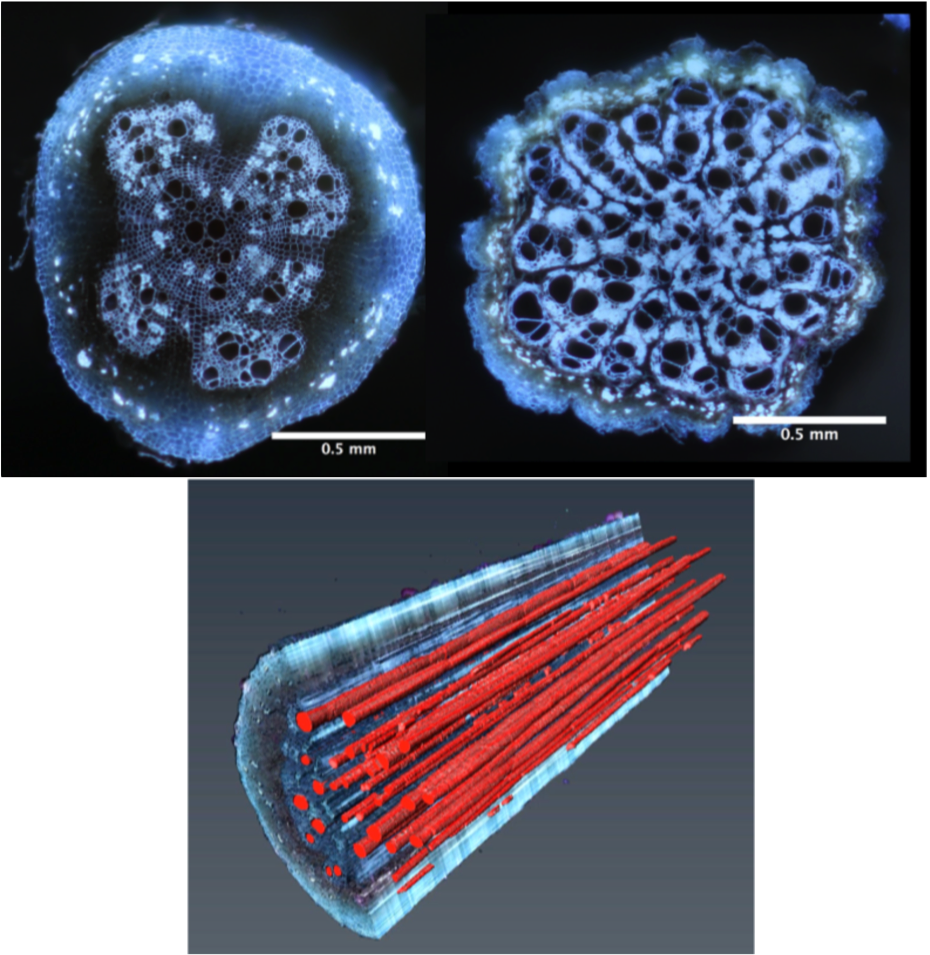Understanding the physiological and genetic basis of root traits enhancing water acquisition by plants to enable the breeding of more stress tolerant crops

Images of root cross-sections
PI:
Jonathan Lynch, Penn State University
Students:
Jim Burridge, Penn State University
Stephanie Klein, Penn State University
Hannah Schneider, Penn State University
Chris Strock, Penn State University
Goals and objectives
The development of crops with greater tolerance to drought and low soil fertility would have important benefits for global agriculture. In poor nations characterized by low input, smallholder farms, drought and low soil fertility are primary causes of the low yields that are at the root of food insecurity. In rich nations, intensive fertilization and irrigation cause environmental pollution and resource degradation. Ongoing soil degradation, the expanding human population, and the effects of global climate change will intensify these problems in the future.
Genetic variation for root traits can be used to develop crops with reduced nutrient and water requirements. For example, soybean and common bean lines with root traits that increase P acquisition are being developed in Asia, Africa, and Latin America. Root traits that enhance the capture of nitrogen and water, which are much more dynamic and mobile than P, are poorly understood. I have developed a conceptual model of root traits to enhance capture of water and N called 'steep, cheap, and deep'. This model consists of root architectural and anatomical traits that enhance the rapid development of deep roots. Some elements of this model have been tested in the field and show great promise. For example, work at Ukulima showed that maize lines with high root cortical aerenchyma (RCA) had deeper rooting, better N capture, and twice the biomass of low RCA lines growing in low N soil. Many elements of this model have not been adequately tested however. The research facility at Willcox will be an excellent resource to test these ideas for drought adaptation (in the first years of the project we found that soil N fertility is too high at Willcox for N studies).
Goal
Understand the physiological and genetic basis of root traits enhancing water acquisition by plants, to enable the breeding of more stress tolerant crops.
Objectives
1) Evaluate the 'steep, cheap, and deep' ideotype for enhanced drought tolerance in maize.
2) Confirm the importance of root traits for drought tolerance in common bean, including basal root growth angle and root dimorphism.
3) Understand the genetic control of root traits important for water capture, through screening of maize and common bean germplasm.
Approach
The general approach will be to compare water capture and plant growth in genotypes contrasting for specific root traits in drought stressed and unstressed plots.

